Jump to:
If you’re new to the hair coloring game, you might be asking, “what is balayage?” Don’t worry — our guide below answers this question and much more. Read on to learn all you need to know.
Considering Balayage Hair?
Gorgeous, sweeping hair color that looks almost naturally sun-kissed – that’s balayage. This color technique is more complicated than others, but balayage offers a natural result that all-over color just can’t compete with.
And there are so many benefits to choosing balayage instead of highlights! Balayage has become one of the most requested services at salons across the country for a reason.
This technique can work on any hair type, flatters absolutely everyone, and is ultra low-maintenance without root touch-ups. It’s also one of the most versatile hair color techniques.
Balayage Video Explainer
Because color is hand-painted onto the hair with this technique, your stylist’s color placement is important and much more varied than highlights. Usually, the lighter color is painted to mimic the way light hits the hair.
This is what gives balayage color such a low-key, natural effect. If you’re thinking about giving balayage a try at your next salon visit, this is the guide for you.
We’re going over everything you need to know about balayage before you get it done. You’ll learn what balayage is, see gorgeous examples, learn the differences between balayage and highlights, and find out what kind of maintenance is required. Let’s dive in!
What Is Balayage?
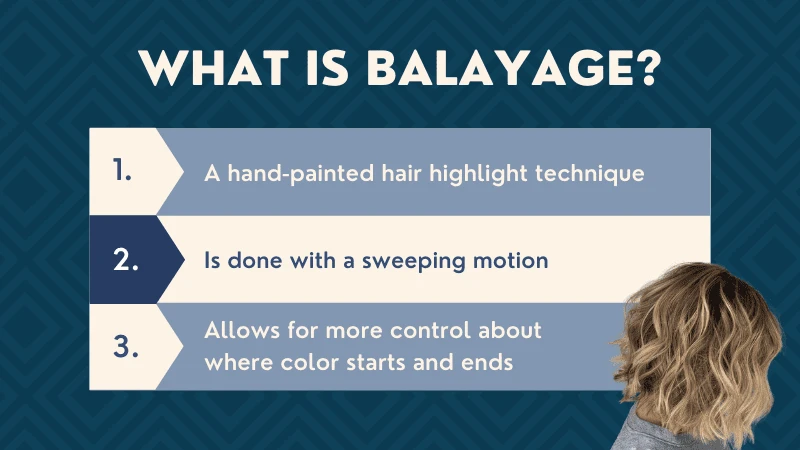
Balayage is a hand-painted color technique that provides a ton of dimension with light and shadow areas in the hair. The word balayage means “to sweep” and hails from the French language.
This is a fitting name for this color technique because an upward sweeping or flicking motion is used as a colorist applies the color or lightener to specific sections of hair.
Stylists avoid the roots during balayage color application and only target sections of hair from the midshaft down to the tips. The color is painted onto strands where sunlight would normally hit. The result is natural-looking highlights that span midway down strands to the tips.
No foils are used in traditional balayage, but some stylists use a blended technique called foiliage. Here, the color is still hand-painted onto the hair, but foils are used to speed up the lifting process and help the hair reach higher (lighter) levels than traditional balayage.
By hand-applying color to strands, balayage allows for more control over where the color starts and ends. That’s part of what makes balayage so appealing: The gradual, almost natural transition of color on different strands.
Balayage vs Highlights
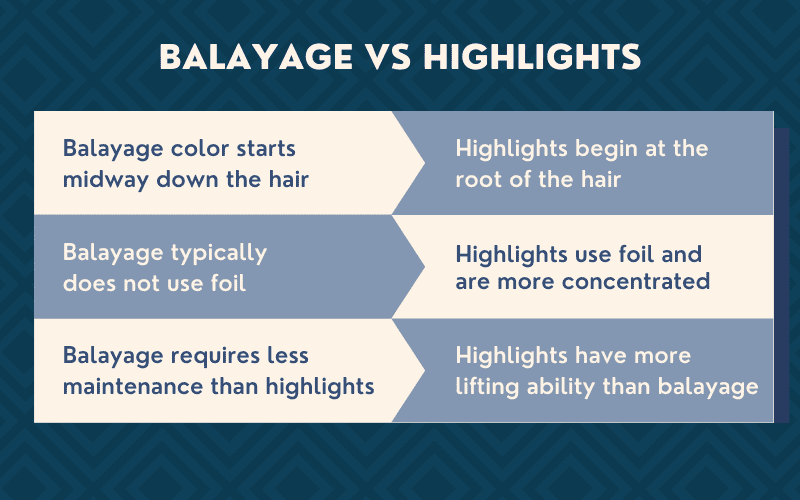
While balayage has a few things in common with highlights, the two services are very different. If you want balayage but ask for highlights, you won’t get the natural, sun-kissed look you’re going for. Let’s look at how balayage differs from highlights.
- Balayage doesn’t start at the roots like highlights do. This is the most noticeable difference between balayage vs highlights: Balayage doesn’t include the roots. Since balayage is intended to look more natural, color starts midway down strands and follows down to the tips. Highlights start at the roots to create thin or chunky sections of lighter color throughout the hair.
- Balayage isn’t as structured as highlights. Every stylist has their own balayage application technique, but it’s never a highly structured thing like highlights. Since balayage is hand-painted, color can be painted on sections of different sizes, start at different heights, and be more heavily concentrated on areas where light naturally hits the hair. Highlights are much more structured, with each section roughly the same width, spanning from root to tip, and following a more rigid application pattern.
- Balayage requires less maintenance than highlights. Highlights start at the roots, so they need to be touched up every 6 to 8 weeks to avoid dark roots showing. Balayage starts lower down without covering the roots, so maintenance is much more relaxed. Touch-ups might be needed 3 to 6 months after balayage. That’s a huge difference in maintenance!
- Balayage has less lifting ability than highlights. If you’re starting with very dark hair, you need enough lift to bring your dark hair to a higher (lighter) color level. The foil used for highlights helps seal in heat, which lifts the hair faster. Since balayage is done without foils, it has less lifting power than highlights. Darker colors may have trouble lifting to light blonde levels with balayage unless a very high-volume developer is used. Since high volume developer easily damages hair, highlights may be the better option for someone with very dark hair.
If you’re looking for gradual sweeping color, a naturally sun-lightened look, and darker roots that require less maintenance, choose balayage instead of highlights.
Your stylist will still be “highlighting” sections of your hair, but by leaving out the roots and letting your natural color gradually transition into the lighter shade painted on, the look is much more subtle.
If you’re looking to make your overall hair color look lighter, or if you like the patterned look that foil or cap highlights give you, you should opt for highlights instead of balayage. It does require more frequent root touch-ups, but you’ll see a more dramatic difference in the color of your hair by choosing highlights.
5 Gorgeous Balayage Examples
Balayage is all about the interplay of light and shadow in the hair. It’s a technique, so every stylist will have their own twist on balayage application. The results differ on different hair types, base colors, curl and wave patterns, and more.
There are so many different ways to wear this trendy style! We found some breathtaking balayage photos to inspire you before your next salon visit. Check out these gorgeous balayage examples!
1. Long Honey-Copper Blonde Balayage
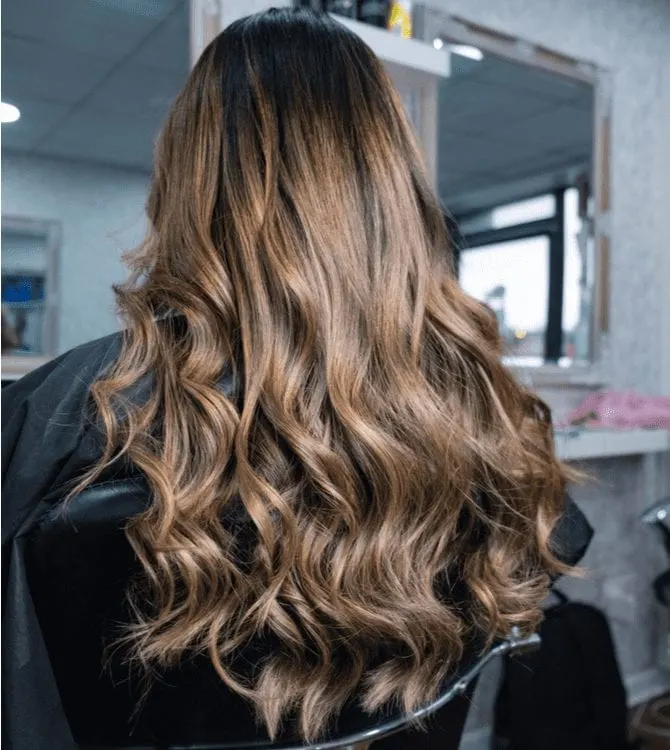
Welly Saikat/Shutterstock
The deep base color here would look unnatural with white-blonde balayage, but honey blonde tinged with copper is absolutely perfect. The warm, reddish tones in the balayage pair well with the dark base color. The results look natural, and we love the way the lighter color weaves through the waves!
2. Short Buttery Blonde Balayage
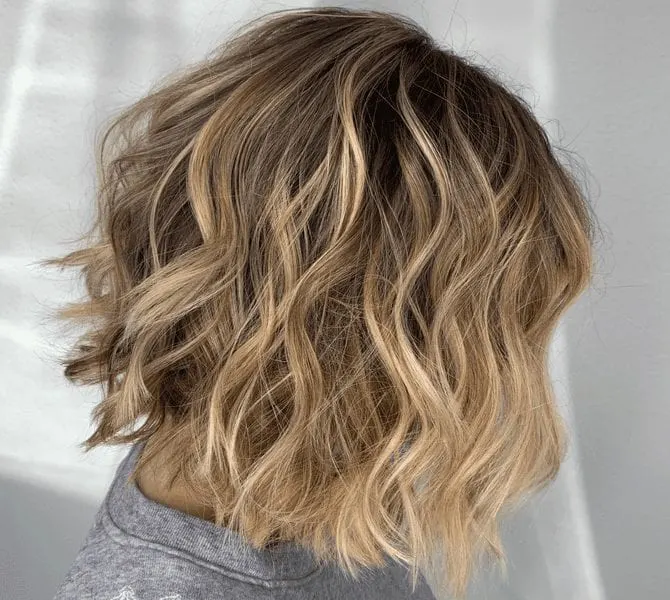
Sohpie Hartmann/Shutterstock
Balayage looks its best in waves and curls to show off the way it reflects light, and this short little blonde number is a perfect example! A warm, buttery blonde is painted onto strands for dimension and a playful, bold look.
3. Subtle Brown to Dark Toffee Blonde Balayage
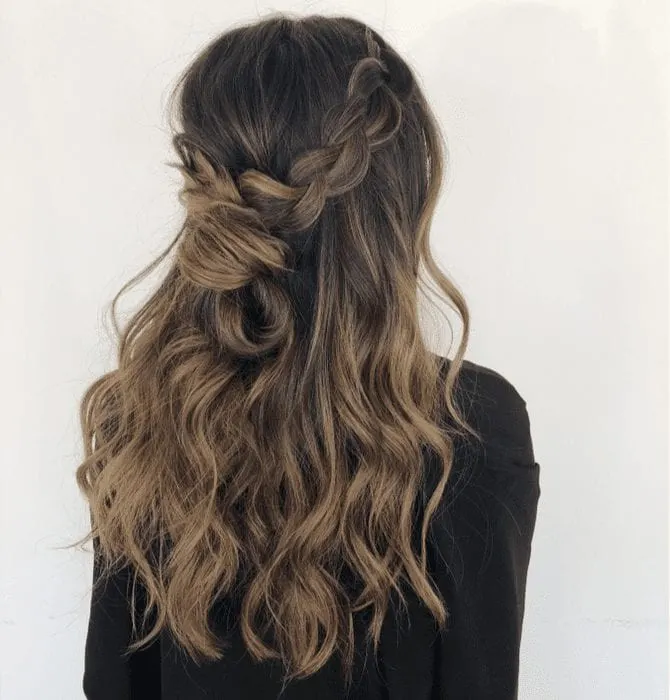
If you want a natural, subtle balayage look, sticking within 3-4 shades of your natural color will help. This brunette has strands of toffee blonde woven throughout the middle and ends of the hair for a sun-lightened effect. We love this color combination!
4. Auburn to Strawberry Blonde Balayage
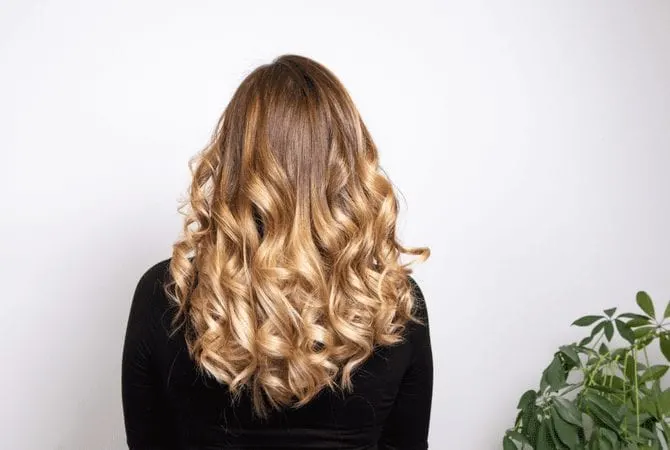
The pretty depth of auburn hair looks amazing next to a fun, shimmery strawberry blonde. The strawberry blonde sections extend upward naturally toward the middle, and the transition is perfect.
Strands of the deeper auburn color just peek through at the ends and on the backside of waves to keep that dimension.
5. Shadow Root Platinum Balayage
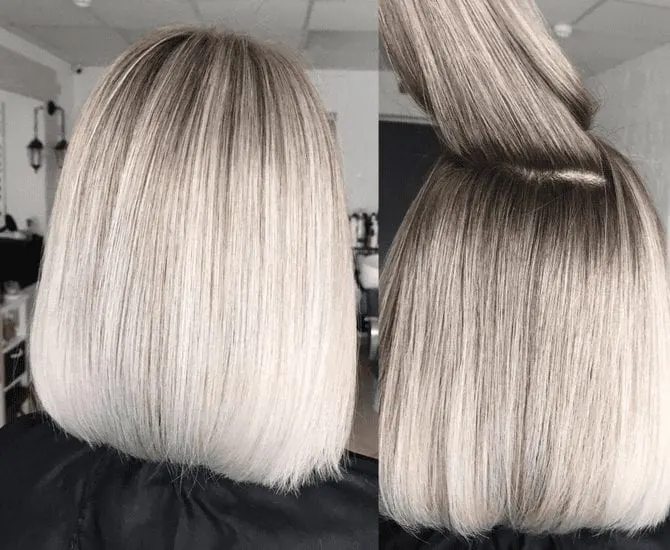
Shumskaya Tatiana/Shutterstock
This example is a little more densely colored than others we’ve seen, but we love the boldness of this look! Strands are lightened just below the roots (to create that shadow root) all the way down to the tips.
The stylist was less focused on making the color look natural and sun-kissed and more focused on making it lighter (look at the beautiful platinum blonde!) all over. These examples illustrate just how versatile balayage can be.
You can start with any base – any hair type, hair color, and hair length (other than super short cuts) can work with balayage. Hand-painted highlights that start midway down the strands can be in any color you choose, but we recommend sticking with colors that go well with your skin undertone (cool, warm, or neutral).
How to Maintain Balayage Color
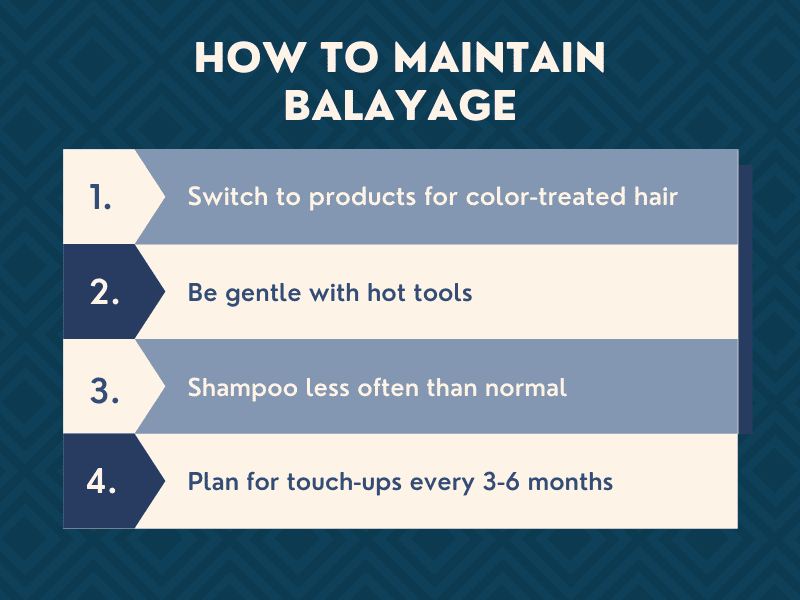
After looking at a few examples, you might have a better idea of how you’d like your balayage to look. That’s great! But before you make an appointment, you’ll need to read up on balayage maintenance and what it entails.
Maintaining your new balayage color will keep it looking fresh for months. Since roots won’t be an issue, your main adversary will be fading. You can combat fading and keep your balayage looking great by following a few steps.
- Switch to products for color-treated hair: Your shampoo, conditioner, styling products, and hair treatments should all be labeled as safe for color-treated hair. If you’re using harsh products that aren’t formulated to be gentle on colored hair, your hair will quickly fade within a few weeks. Switch to products that are safe for colored hair to avoid fading. You may want to use a toning shampoo for your specific shade to keep it from turning brassy.
- Be gentle with hot tools: Styling with hot tools (curling iron, flat iron, hair dryer) can cause heat damage. Heat damage is one of the main reasons color will fade! If you can’t avoid heat styling in general, make sure you use a good heat protectant all over your hair first. It will protect your strands from taking as much heat damage and saves your color from fading.
- Shampoo less often: You can shower every day, but you shouldn’t be shampooing every day – especially after balayage. Shampoo strips your hair of its natural oils, roughs up the cuticle when you use hot water, and fades hair color faster than anything else. Even if you’re using a color-safe shampoo, it’s wise to lather up less often. This will help you avoid fading out your new color too fast.
- Plan for touch-ups every 3-6 months: Balayage requires less maintenance than highlights and all-over colors, but it’s not 100% maintenance-free. You’ll still need to go back to the salon every 3-6 months to keep it looking fresh. After about three months, your hair will have grown about an inch and a half, pushing the lighter color further down your strands and making it look a little imbalanced. A quick touch-up every few months will have it looking as good as new!
Deciding on balayage for your next hair appointment is a big decision. If you’ve never had balayage done before, you now know all the important stuff – what it is, how it differs from highlights, how this technique looks with different hair colors and textures, and how to maintain the look for months without fading.
The final thing you should consider now that you know more about it: Is balayage really what you want? With the versatility of this color technique, you can make it as subtle or bold as you want.
You can opt for a slightly lighter shade of your own hair color for the most natural look or choose a much lighter shade to create even more dimension.
Your next step is finding a stylist who specializes in the balayage technique.
If you’re unsure where to start, you can use our salon locator tool to find out where the hair salons near you are located. Make sure you ask your stylist about their experience with balayage before committing. Anyone can do the balayage technique, but only skilled stylists can make it look natural!
